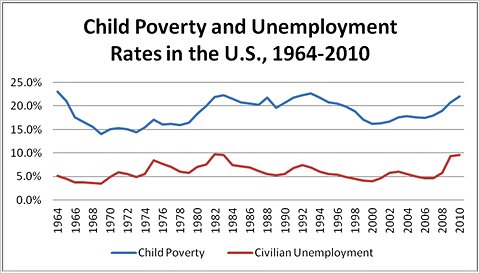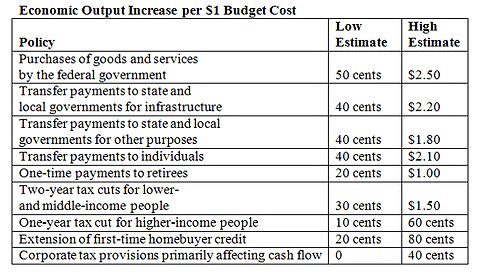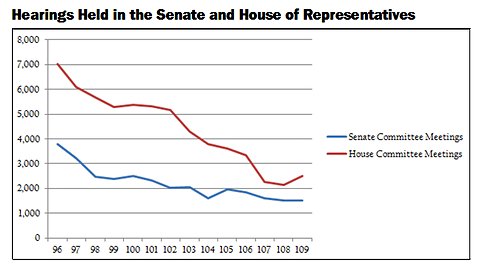
Bruce Bartlett held senior policy roles in the Reagan and George H.W. Bush administrations and served on the staffs of Representatives Jack Kemp and Ron Paul. He is the author of the forthcoming book “The Benefit and the Burden: Tax Reform – Why We Need It and What It Will Take.”
On Friday, President Obama announced plans to consolidate a number of federal agencies related to business and trade into a single agency in order to improve efficiency and the international competitiveness of American companies.
Today’s Economist
Perspectives from expert contributors.
The agencies to be combined are the Department of Commerce, the Small Business Administration, the Export-Import Bank, the Overseas Private Investment Corporation, the Trade and Development Agency, and the Office of the Trade Representative. A 2010 report from the Congressional Research Service provides a good overview of the functions of these organizations.
This is not a new idea. In 1983, President Reagan asked Congress for a similar reorganization. According to a New York Times article, the purpose of the new agency was to create an American version of Japan’s powerful Ministry of International Trade and Industry.
At the time, Japan was widely viewed the same way China is today: as our greatest economic competitor and potentially a national security threat as well. Books like “MITI and the Japanese Miracle” (1982) by Chalmers Johnson were widely read. They glorified Japan’s “industrial policy” and praised its bureaucrats for vision and skill in using a combination of trade restrictions, targeted subsidies and regulatory policy to create an economic juggernaut.
While not seeking to emulate MITI’s heavy-handed command and control of private industry, American officials did see international trade, especially export prowess, as a key to economic prosperity and national power.
If it took selective trade restrictions on strategic goods like computer chips or subsidies to domestic manufacturers, then that’s what it took to maintain American supremacy in a world in which nuclear weapons counted for less and trade deficits were a sign of weakness.
Economists were less impressed by MITI than political scientists such as Dr. Johnson. The economists thought that Japan’s economic success lay mainly in its excellent tax and budget policies – which actually had their roots in the American occupation after World War II when Gen. Douglas MacArthur had the Columbia University economist Carl Shoup study the Japanese tax system and write a report whose recommendations were largely implemented.
Japan also had a highly competitive domestic market, a high savings rate and strong productivity growth.
These macroeconomic factors were far more important to Japan’s postwar economic success than anything MITI accomplished, the economists asserted.
In the late 1980s, cracks in MITI’s facade of invincibility were evident. By the early 1990s, high-profile MITI initiatives in advanced computers and nuclear power were widely viewed as failures.
Economists began increasingly to view MITI as a hindrance to growth. Books like “Divided Sun: MITI and the Breakdown of Japanese High-Tech Industrial Policy, 1975-1993” (1995) by Scott Callon reflected the growing consensus, as did the 1996 article by the economists Richard Beason and David Weinstein in the Review of Economics and Statistics.
By 2001, the Japanese government accepted the MITI critique and effectively abolished it, folding it into the Ministry of Economy, Trade and Industry. A 2002 study published by the Ministry of Finance concluded, “The Japanese model was not the source of Japanese competiveness, but the cause of our failure.”
Economists now discourage developing nations from adopting Japanese-style industrial policies.
Nevertheless, the Obama administration appears enamored with exactly the sort of industrial policy that Japan rejected. Last year, the president promised to double exports over five years, a goal most economists considered fanciful; has promoted “Buy America” requirements that have roiled trade relations with Canada, the United States’ largest trading partner; and often extols the special virtues of manufacturing companies, proposing more special tax breaks for them just last week.
One provision of Mr. Obama’s reorganization plan that is of particular concern to free traders is folding the Office of the Trade Representative into the Commerce Department.
I know from personal experience at the Treasury Department that in internal administration discussions of trade policy the various agencies are expected to play certain roles. Commerce always defends whatever business wants because that’s its job. The Council of Economic Advisers always takes the principled free trade position, and so on.
At the end, the Office of the Trade Representative is the “honest broker,” a role that would be impossible for it to play as part of the parochial Commerce Department. The Office of the Trade Representative’s ability to fulfill this function is now assured by its position as part of the executive office of the president. This allows it to take the broad view of what is in the best interest of the country as a whole and bargain with our trading partners in good faith.
To effectively abolish the Office of the Trade Representative is a dreadful idea. It is a small agency; there are no efficiency gains to be realized by making it another bureau within Commerce. And no matter what promises are made to guarantee its independence, placing the Office of the Trade Representative within Commerce will inevitably politicize the office.
It’s easier to defend the transfer of other agencies like S.B.A. into a revamped Commerce Department. There’s no evidence that S.B.A. does much of anything to promote small businesses. Its independent status has made it easier for those that benefit from its programs to essentially capture it and use it to channel funds to favored constituencies.
Conservative groups like the Heritage Foundation have for years called for S.B.A. to be abolished.
The Obama proposal may just be an election year ploy so that he can continue to say that he will create two million jobs through exports. It may also be designed to force Congressional Republicans to choose between their professed love of small businesses and the ineffectiveness and waste of the S.B.A.
But the Obama proposal may also indicate a commitment to discredited industrial policies and a subordination of trade policy to political interests.
Article source: http://feeds.nytimes.com/click.phdo?i=ac42d2895e804b4c98a718ea37c5cb80
















